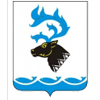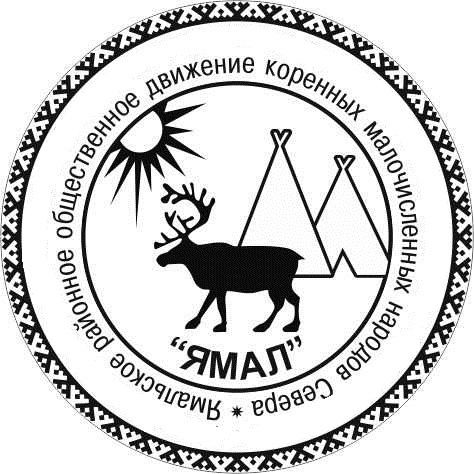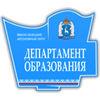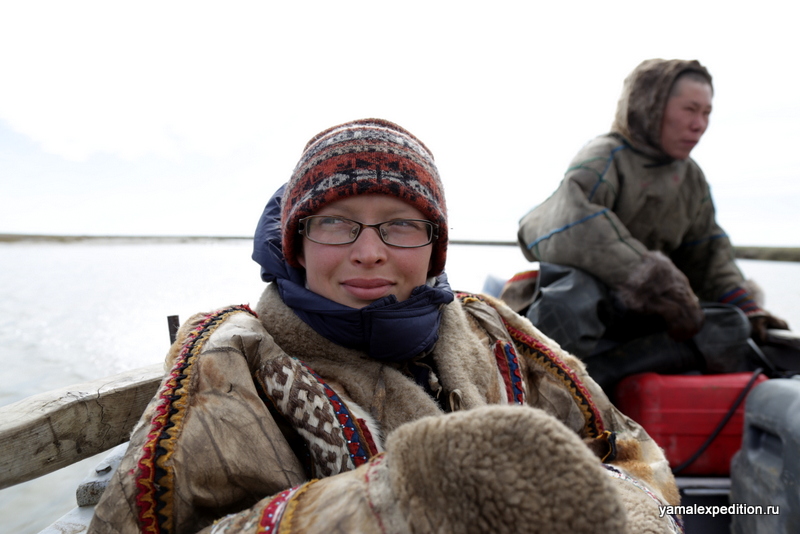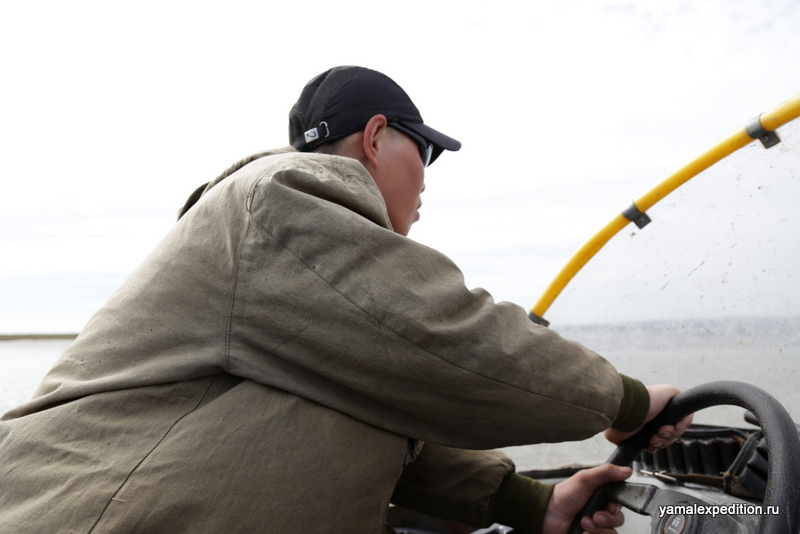
Geopraphical coortinates of Pupta and Hanuta's chum: N 70º15'49,6'' E 067º33'20,6''. Before two brothers with the whole family were living in Marra-Sale (Nenets: "sand gore", on different maps one can find different versions of the name: Morrasale, Marrasalya, Marra-Sale). But lately the family has moved to Mordy-Yaha river to a very favorable location: close to Bovanenkovo town and at the same time not far from Kara Sea with its valuable fish, for example, omul.
Alexandra and Sofia, mother of two brothers and Albina Serotetto:
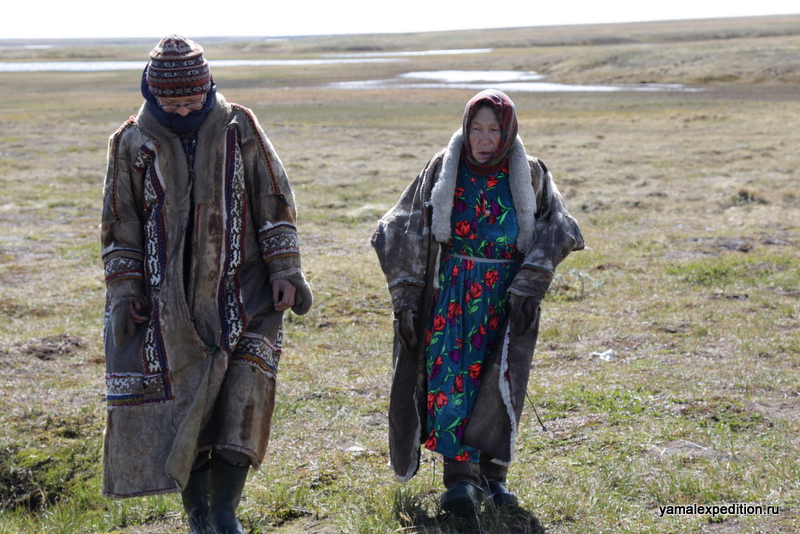
On June 20th we've got along the duct to the Mordy-Yaha river and got to its inflow. Here we were interested especially in two locations on the left bank of the river: the abandoned trading station called Mordy-Yaha, and the sacred place Parne-Sale.
Mordy-Yaha trading station (N 70º15'49,6'' E 067º33'20,6'') was established in 1937 and functioned more or less successfully till late 1980-s. There were several tries to reopen the trading station, all not successful. In the past locals bought here food supply, sold meat, fish, horns and velvet antlets.
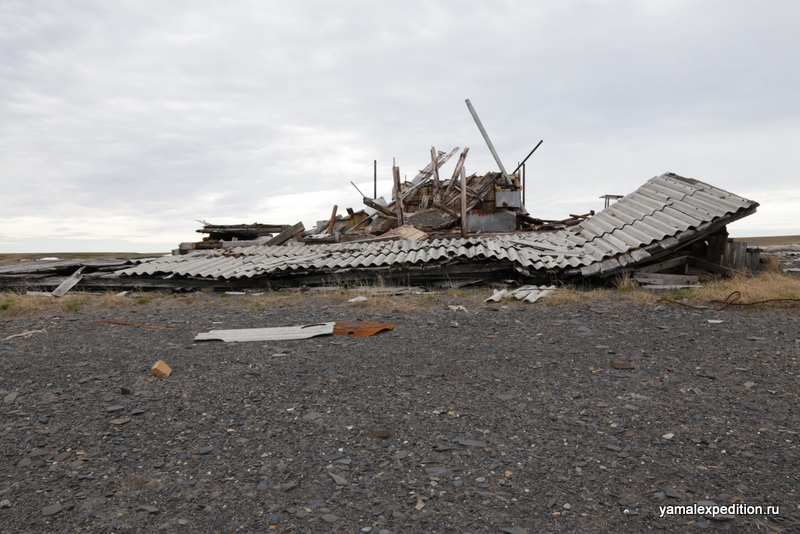

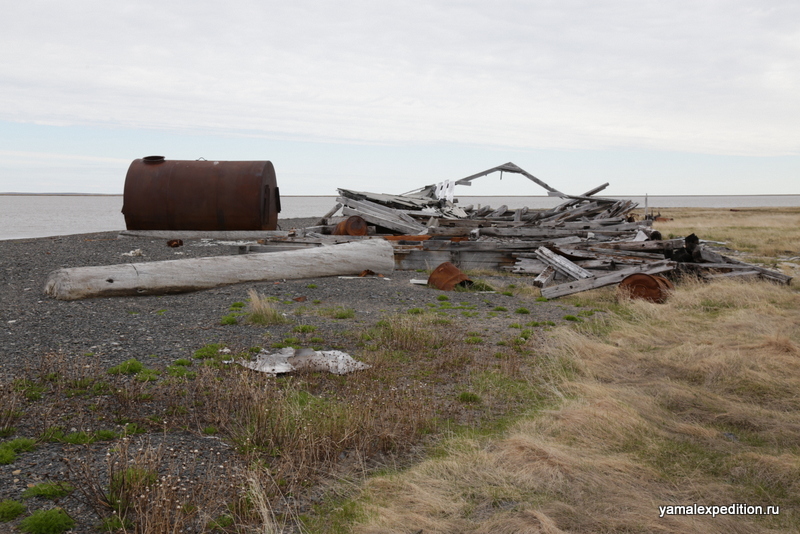
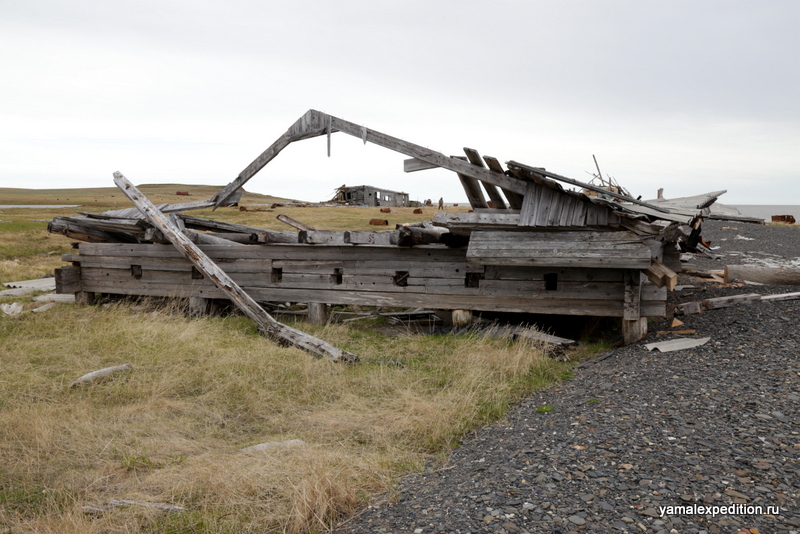
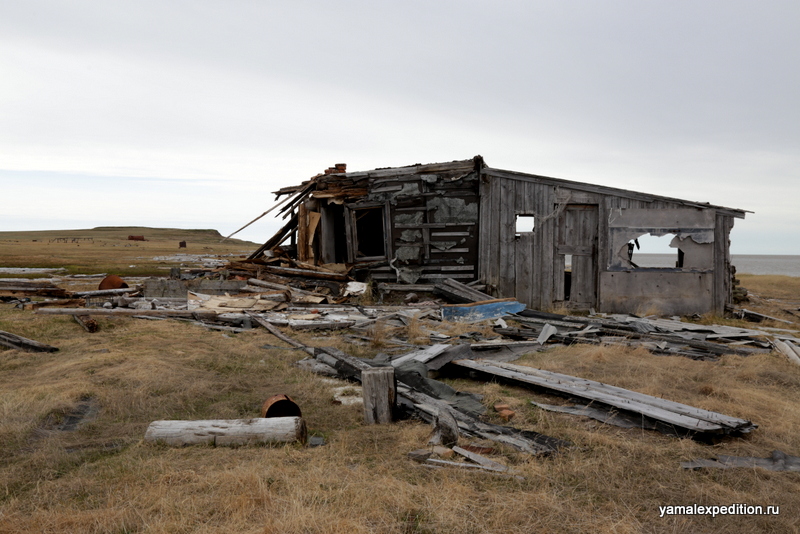
View from the stading station to sacred place Parne-Sale:
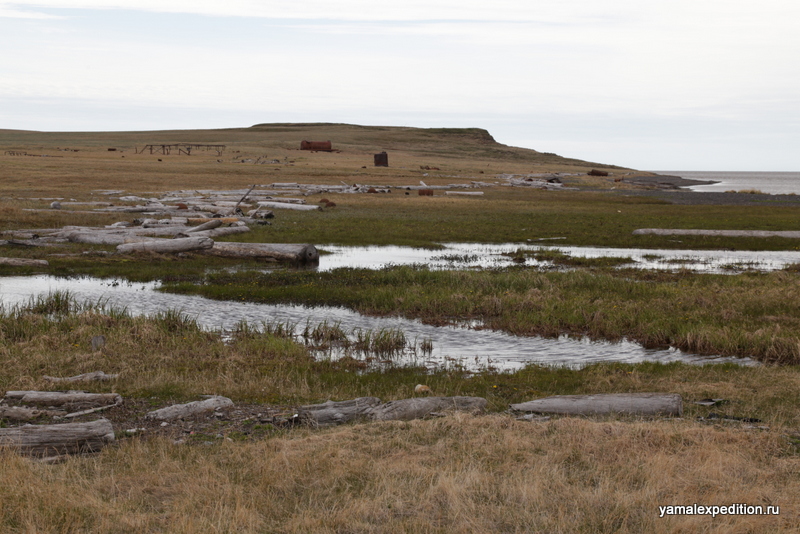
700 meters in Western direction from the trading station one can find Parne-Sale (Nenets "devil's/witch'es duct'", one of the most well-known sacred places for the Nenets of Yamal. Last time scientist have visited the place rather long time ago, in the beginning of the 20th century. The Nenets are visiting the sacred place regularly. In geographical terms we can discribe Parne-Sale as a hill: it's Northern part is 6 meters high, and it is located on the rather high, more than 30 meters, bank of the Kara Sea. On the top of the hill, in it's Northern part there is a small pile of the bones and wooden sticks. Geographic coordinates of Parne-Sale: N 70º15'49,6'' E 067º33'20,6''.
Kara Sea bank near Parne-Sale:
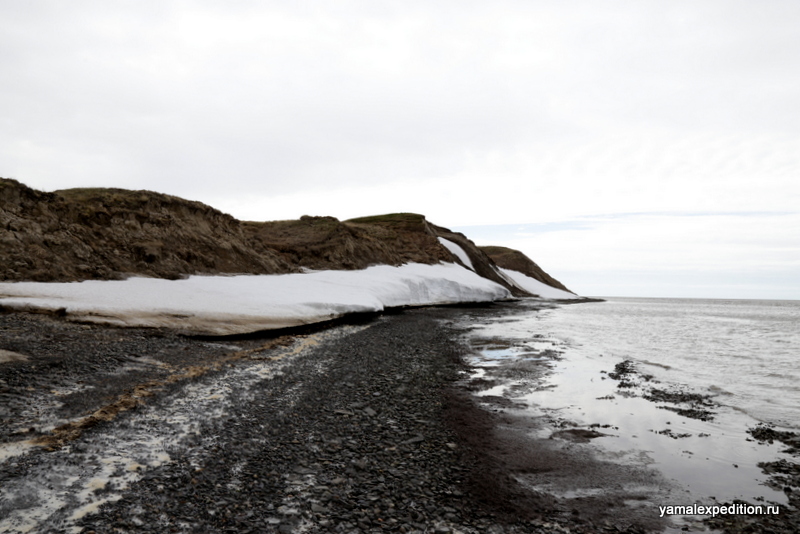
View from Parne-Sale to the West: in the front there are some graves to see, and in the background - a cross:
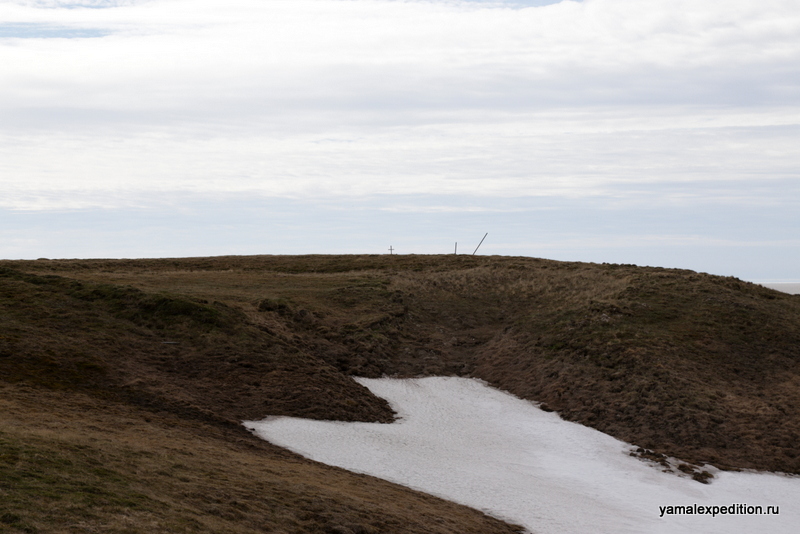
Parna-Sale view from the Nord:
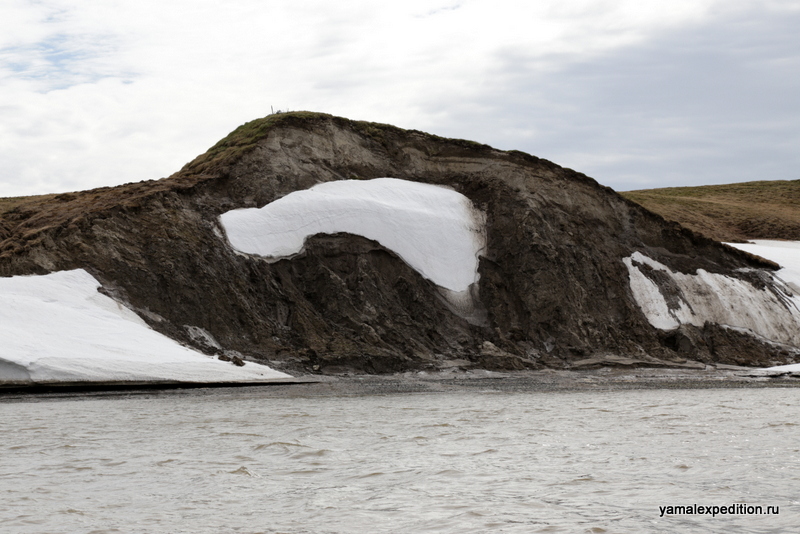
A cross in the Western direction from Parne-Sale:
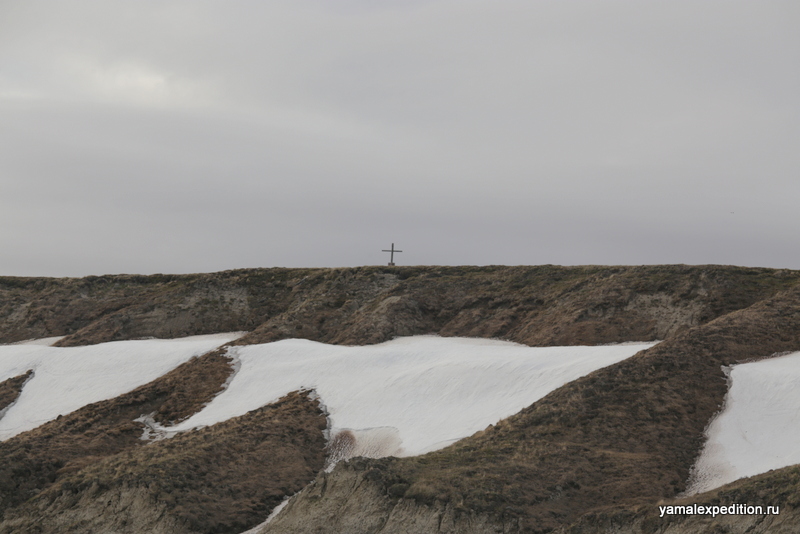
Kara Sea banks are constantly sliding, so the pot of Parne-Sale now looks completely different from 50 years ago. The usual for sacred places in Yamal pile of reindeers sculls has fallen down. The Nenets tried to make some restoration at a new place, which is also in extremely close distance from the hill's range. So no doubt, this enw pile will fall in the Kara Sea in the future.
The brothers could not tell us worshipping history of Parne-Sale (same with all other Nenets we met on our way). But still they have visited the sacred place, and have performed all rituals, already familiar to us - but in their own version. Reindeer herders usually smear wooden sticks and nartas ends with the reindeer's blood or a stew made of reindeer heart. Our brothers-fishermen have taken with them ordionary butter for the same purpose. They've got a little frustrated that we didn't have vodka for proper worshipping. Pupta and Hanuta have told us, they usually visit Parne-Sale before put out to sea. According to some tundra inhabitants' words the sacred place is often visited and even considered "a private sacred place" by Vassily Serotetto, who in the summer time can reach Mordy-Yaha river's estuary with his herd.
Another cult object near Mordy-Yaha's estuary is a grave in 150 m distance to the West from Parne-Sale. According to our informants, a man who was burried here, onve tried to shoot the sacret place and suddenly died after that. About 300 m to the West from Parne-Sale one finds an Orthodox cross, raised not long ago. Nearly 1,2 kilometers South-East from Parne-Sale there is an area calles "Golden cross" - the Nenets say, "the cross here wasn't really goldenmost probubly just gold-plated", the place is forbitted to visit at all.
We just want to note, that all this information is a little incoherent: we are sure that other people could tell the same stories and locate the same objects in the area differently. As for locating and describing the sacred places, unfortunately we could not go through all usual procedures, used for example in archeological methods. We find it is non ethical and unproper to take detailed pictures and graphic fixation of the sacred places which we visit together with Nenets. We're sure nobody would interfere or blame us, but later nobody in Yamal tundra would agree to accompany us to such trips.
Our experience of visiting the Nenets sacred places shows that the best time to locate and visit them is in spring time, when one can still move on snowmobile. Women are not allowed to visit sacred places, but they can ask questions about them, can be in rather close distance, to look at the pictures and videos taken there.
After visiting Parne-Sale we entered the Kara Sea. But because of strong wind there were a lot of ice-cakes bear the bank. So the brother went for other plan.
The Kara Sea on the way to Marra-Sale:
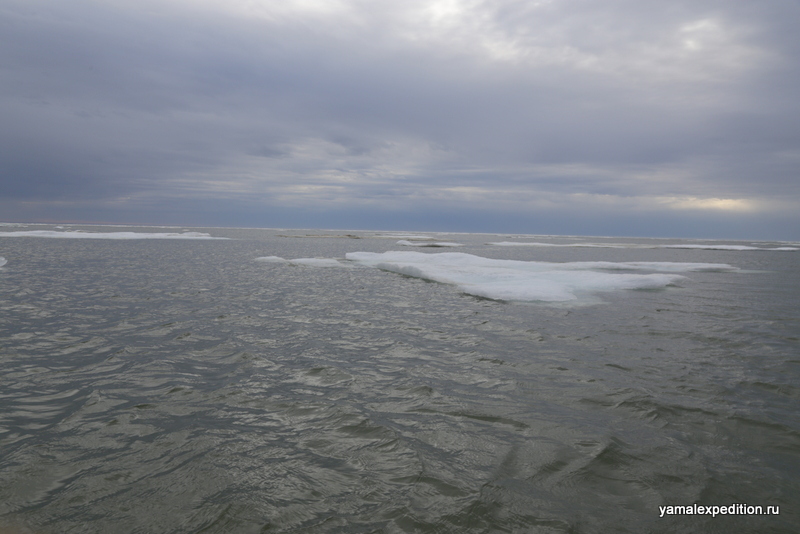
Usually fishermen are going deeper into the sea, but we had to stay close to the bank. But here we had to deal with sandbanks - even in 1,5-2 km far from the bank water wasn't still deep enough. Sometimes we had not only stop the motor, but get our the boat and push it.
Hanuta is pushing the boat:
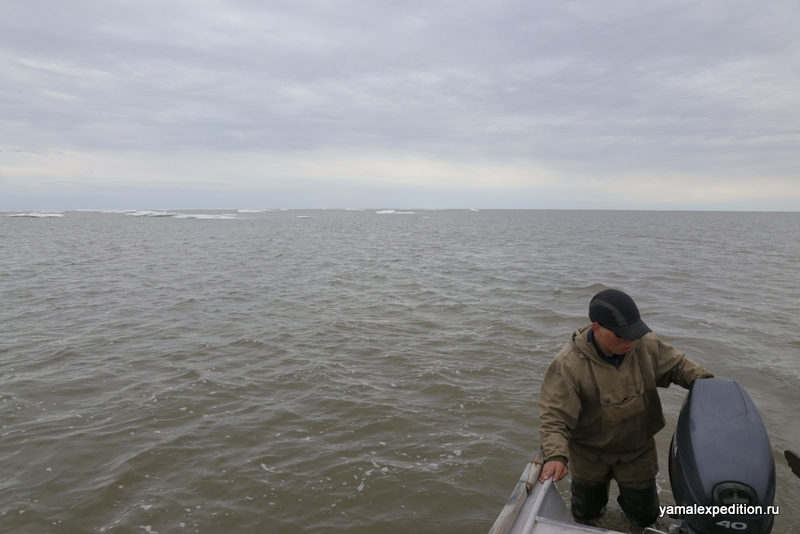
One moment Pupta told us we couldn't go on this way, and we just sat for two hours in the boat waiting for high water. About 6 pm the water level became finally enough for us to continue moving.
40 kilometers South from Mordy-Yaha river's estuary there was so much ice-cakes that we saw seals for the first time. Two brothers said they've never seen this much seals in one place before. Seals (and small amount of ugruks) were lieyng on ice-cakes and swimming in the water - totally we've seen several hundreds of the anumals!
It's rather hard to take a picture of the seal in the open sea (same in the Ladoga Lake): these animals are very shy, and as soon as they see a human, they just dive deep into the water.

Seals on ice-cakes:

One of the most favorite jokes and conversation topics in this part of Yamal is meeting a polar bear. Polar bears are not unusual guests here. One can meet them mostly in August - and not only close to the bank, and rather far from the sea in tundra, even near chums. The Nenets think though polar bears are afraid of people and do not come too close.
According the general low of Russian Federation, for killing a bear one is becoming a subject to criminal sanctions (curious readers can check it in Internet), but of course the Nenets are killing polar bears. Every one in this area has eaten the polar bear meat, and hunters who killer more than one bear are not so rare. And not not meat usually: even in Bovanenkovo one can sell polar bear fur skin for 150–200 thousands rouble, so market price wins over laws and regulations. The locals have cleared to us another question: despite ideas of our frinds and colleges from the mainland the warmest fur skin is not one of polar bear, but of reindeer! We didn't meet polar bears during this trip, but is we come back in this area in the end of summer, we are sure we could meet the chance.
About the evening we experienced one more time (and not the last time during this trip) what actually is "ice captivity". Our boat moved close to the bank, and the brothers had to fing the narrow passages between huge ice-cakes. Finally Pupta nad Hatuta told us, that there was no way further and we all had to go back. We decided to leave the boat and rest of the distance - about 15 km - walk on foot. After a short break we started this way.
The boat we've left on the bank, 15 km from Marra-Sale:
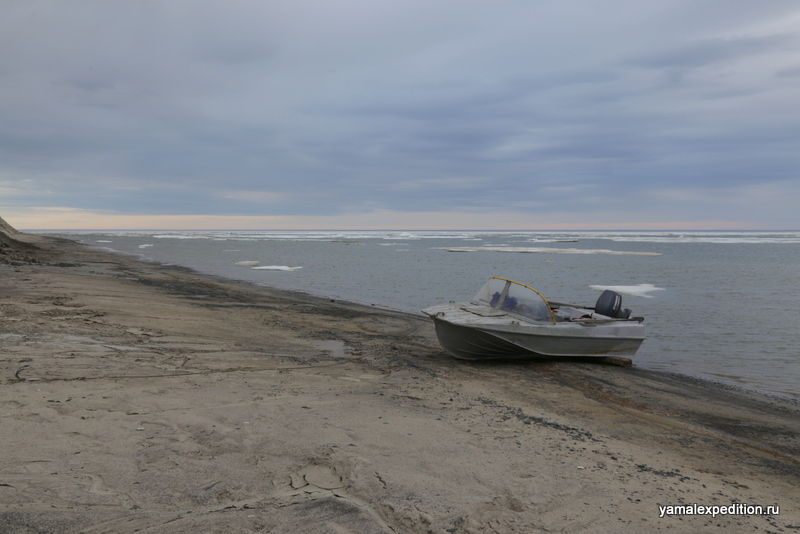
Having rest before 15 km march. Pupta is making tea:
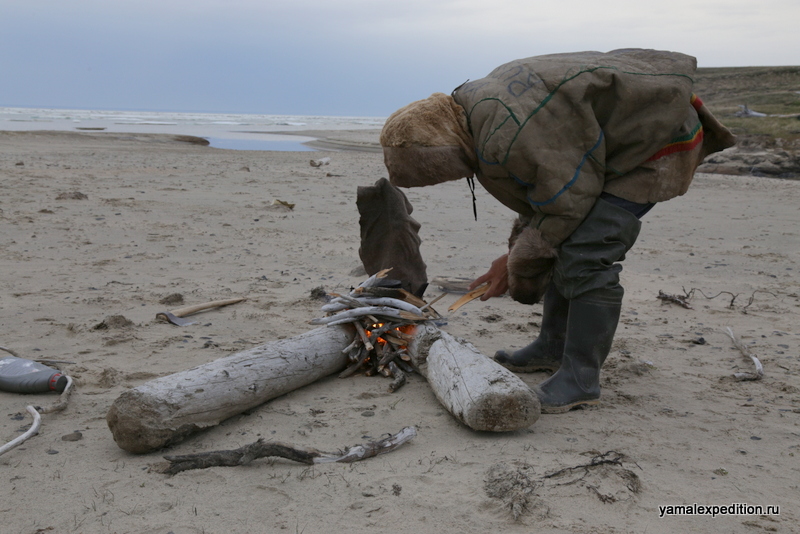
Some rest on the bank. Alexander and Pupta:
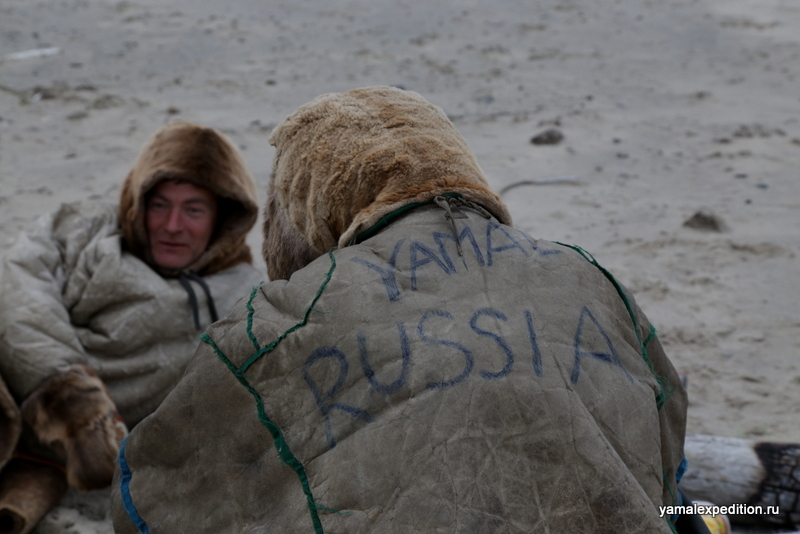
15 kilometers seem to too long distance at all - but we we at least 5 hours on the way: matchy ground, endless climbings and goings down the hills, and rivers we had to cross by foot - all this has made the trip very challenging.
Alexandra, Pupta and Hanuta:
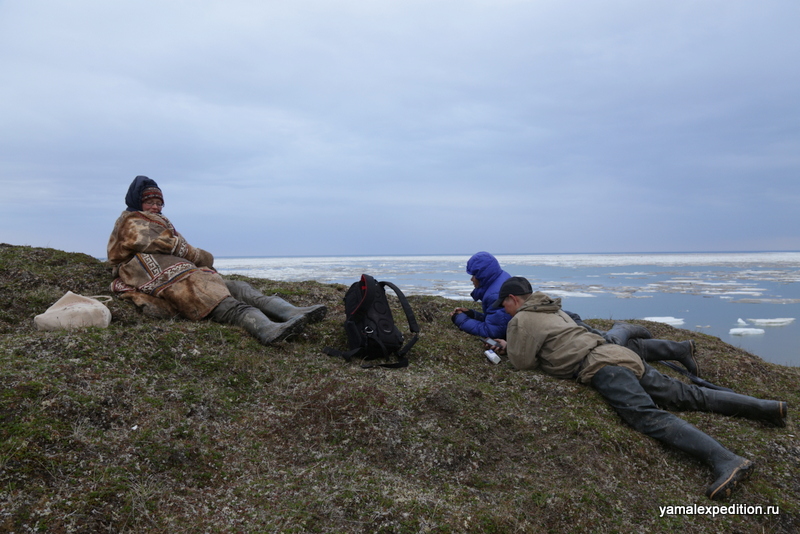
Alexantra and Pupta crossing the river:
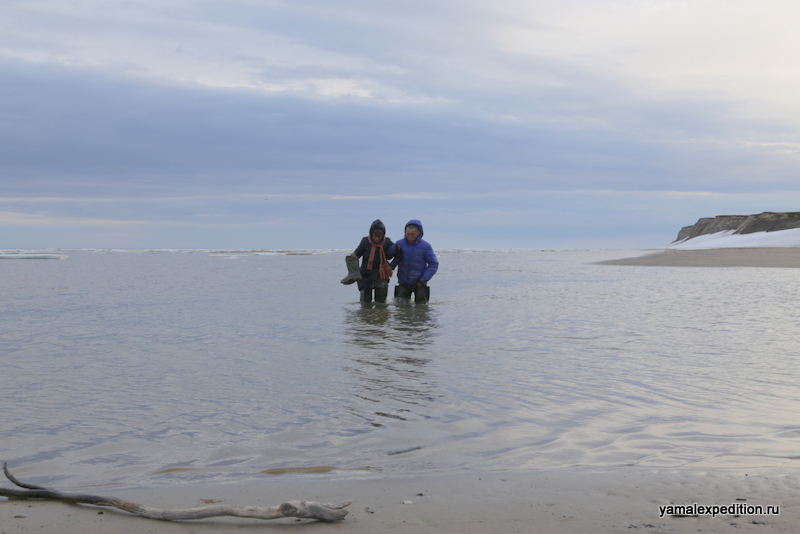
The last river's crossing was more comfortable thank to Pupta, who without any clothes (water temperature is hardly more than 0 degrees Celcius) crossed to another bank and delivered a boot.

